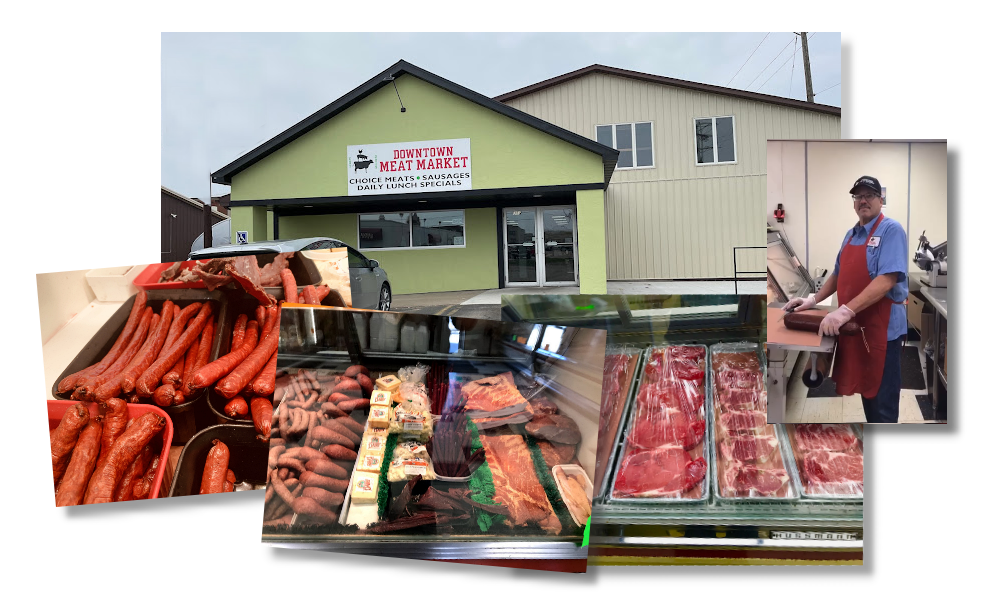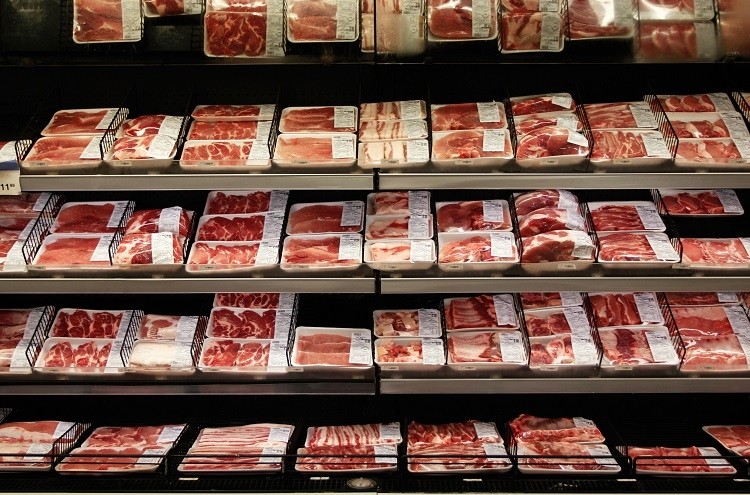Uncover the Art of the Butcher's Cut in a Modern Meat Market
In the ever-evolving landscape of contemporary meat markets, the butcher's cut has transcended its traditional roots, combining olden craftsmanship with contemporary practices. bagley farms meat market edwardsville il. Today's butchers are not merely processors of meat; they are well-informed artisans who emphasize sustainability and ethical sourcing. Their competence in picking and preparing cuts tailored to specific cooking demands uses an unmatched eating experience. Yet, what absolutely establishes the modern-day butcher apart is their capacity to create a deeper link between consumers and the origins of their meat. Just how do these masters balance tradition with innovation, and what implications does this have for the future of meat intake?
Development of Butchery Strategies

The mid-20th century saw butchery methods additionally refined by scientific insights into muscular tissue biology and meat aging, boosting both inflammation and taste. Developments like vacuum product packaging and refrigeration expanded product shelf-life, allowing butchers to expand offerings and boost top quality control. This period also noted the increase of specialized tools, such as band saws and meat slicers, which raised precision and efficiency in meat handling.
Computerized systems now aid in tracking pet provenance and optimizing cuts to fulfill particular consumer preferences. Furthermore, a resurgence in artisanal butchery has arised, blending standard skills with contemporary knowledge to provide to consumers looking for honest and sustainable meat alternatives.

Understanding Meat Cuts

Comprehending the complexities of meat cuts is necessary for both butchers and customers looking for top quality and worth. Each cut originates from a various component of the animal, passing on distinct flavors, structures, and cooking methods. Mastery of these differences not just boosts cooking experiences however likewise maximizes the energy of each carcass. For butchers, specific cuts mirror ability and respect for the craft, guaranteeing minimal waste and optimal return.
The primary groups of meat cuts include primitive, sub-primal, and retail cuts. Butchers then damage these down further into sub-primal cuts, prior to finally generating retail cuts available to customers, like ribeye or tenderloin.
Understanding muscle mass make-up is vital; muscles utilized extra frequently by the pet often tend to be tougher and are best fit for slow-moving cooking techniques, while less-used muscular tissues, like those found in the loin, are a lot more tender and perfect for grilling or roasting. Experience with these differences empowers consumers to make enlightened selections, enhancing their culinary undertakings.
Picking Top Quality Meat
Selecting the ideal meat includes more than just picking an aesthetically enticing item from the screen. The art of selecting top quality meat calls for a discerning eye and understanding of specific features that indicate freshness and excellence.
Second of all, think about the marbling, which refers to the white streaks of fat within the muscle mass. Proper marbling is a key indicator of inflammation and flavor, as it thaws during food preparation, improving the meat's juiciness. Remember, greater marbling typically correlates with this page exceptional high quality cuts, such as USDA Prime.
Texture is one more crucial variable; meat must feel strong to the touch, not slimy or extremely soft. Additionally, be mindful of the aroma. Fresh meat must have a tidy, neutral odor, free from any type of sour or off-putting odors.
Pairing Cuts With Cooking Approaches
Effectively coupling cuts of meat with the proper food preparation methods is vital for achieving ideal flavor and texture. Different cuts differ in tenderness, marbling, and connective tissue web content, each requiring certain strategies to unlock their capacity. Tender cuts like filet mignon and ribeye, with their intrinsic marbling, advantage from high-heat, quick-cooking advice methods such as grilling or pan-searing. These techniques boost the meat's all-natural flavors and guarantee a juicy surface.
Alternatively, tougher cuts like brisket and chuck roast are rich in collagen, which breaks down into gelatin when prepared slowly. These cuts are perfect for braising or sluggish roasting, enabling the meat to tenderize in time and establish deep, complicated flavors. Cuts such as brief ribs and pork shoulder get on well with slow-cooking techniques, where prolonged cooking times transform their robust textures into delicious recipes.
Lamb shanks and oxtail, which need extended cooking to tenderize, are perfect prospects for cooking or sluggish simmering. These techniques coax out rich, passionate tastes while keeping wetness. By comprehending the distinct qualities of each cut, chefs and home chefs alike can raise their culinary creations, ensuring each recipe is both pleasing and unforgettable.
The Butcher's Role Today
Navigating the advancing landscape of the contemporary meat market, the butcher's function today extends past simple prep work of cuts. Contemporary butchers are cooking artisans, educators, and supporters for sustainable techniques. They connect the gap in between the ranch and the fork by guaranteeing moral sourcing, recognizing pet husbandry, and prioritizing transparency in the supply chain. This change reflects the expanding consumer demand for top quality over quantity, where provenance and pet welfare are paramount.
In enhancement to crafting precise read more cuts, butchers currently engage directly with clients, offering cooking recommendations and tailoring choices to match individual requirements and preferences. Their expertise in meat aging, marbling, and flavor accounts empowers consumers to make educated choices, improving their culinary experiences. This tailored service exemplifies the butcher's evolving function as a relied on expert in the kitchen.
Additionally, butchers are crucial in reducing waste, using entire pets to create diverse products such as sausages and supplies - bagley farms meat market edwardsville il. This thorough approach not only appreciates the pet yet additionally aligns with contemporary sustainability goals. In this method, the modern-day butcher personifies both tradition and development, adapting to an ever-changing market while protecting the creativity and honesty of their craft

Verdict
The modern butcher's craft elaborately weaves conventional techniques with modern-day technologies, highlighting sustainable practices and moral sourcing. Proficiency in understanding varied meat cuts and high quality indicators encourages butchers to supply educated recommendations, straightening particular cuts with optimal food preparation methods. This expertise not just raises cooking experiences however also enhances the connection in between consumers and the beginnings of their food. By honoring historic practices while welcoming contemporary needs, the butcher's role continues to be crucial in today's sophisticated meat market.
Comments on “Why Residents Love Bagley Farms Meat Market Edwardsville IL for Their Meat Buying”